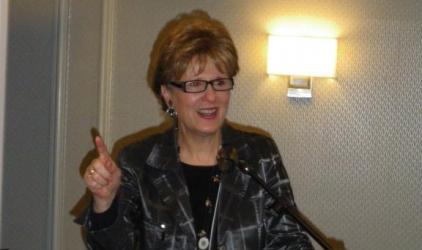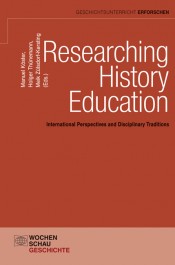What Brings Us to Our Research and What Sustains Us? (Penney Clark)

This is #67 in the THEN/HiER collection of research snapshots which appear in our monthly e-Bulletin and on our website. I look forward to reading the snapshot each month because of the insights they offer not only into what people are investigating, but what it is that inspires them. In his snapshot, Christopher Dummitt talks about being “prepared to be surprised.” Margaret Conrad reveals her scholarly passions. As she puts it, “old historians never give up doing research, they just find new projects to inspire their energies.” Alan MacEachern declares, “I love what I do.” Alan Sears points to the role of personal connections and unexpected opportunities. Sirkka Ahonen describes her mission to seek ways to avoid “divisive ‘double talk’ about history.” In his chapter in New Possibilities for the Past: Shaping History Education in Canada (UBC Press, 2011), historian Gerry Friesen describes his efforts to nurture a sense of wonder in his undergraduate history students. Ultimately, it is this sense of wonder that underpins our research.
My interest in the history of educational publishing in Canada grew out of my experiences as a textbook and teacher guide author for several publishers. I began to wonder about the relationship between textbooks as an economic commodity and their place in classrooms intended to offer equality of opportunity. It was also spurred by the kind of happenstance mentioned by Alan Sears. Janet Friskney from the History of the Book in Canada project heard me give a conference presentation in 2004 and subsequently, I was invited to contribute to that project. I have not looked back since.
This research can be depressing because, as it turns out, I am documenting the rise and eventual demise over time of Canadian educational publishers, which have inevitably been purchased by multinational giants. (See Penney Clark and Wayne Knights, “‘Fratricidal Warfare’: English-Canadian Textbook Publishers Take on the Americans, 1970-1980,” in History of Education [2013]; and Penney Clark, “‘A Precarious Enterprise’: A Case Study of Western Canadian Regional Educational Publishing, 1980-1989,” in Historical Studies in Education [2013].) Regardless, it remains fascinating. As I note in the conclusion of the latter article, “This case study demonstrates that textbooks are far more than merely instruments of pedagogy. They are artifacts situated at a busy intersection where culture, economics, politics, and pedagogy mutter expletives, sound their horns, shake their fists, and shout out in outrage. Textbook publishing must be negotiated with care” (p. 22).
 My work on educational publishing falls within the area of history of education. So, too, does my work on the history of history education in Canada. One encouraging development here is increased empirical research into how teachers teach and students learn history. Scholars are investigating areas such as the use of technology (e.g., gaming, virtual environments), how to teach with primary sources, and how to assess student progression in historical thinking and historical consciousness. You may wish to read my chapter, “History Education Research in Canada: A Late Bloomer,” in Researching History Education: International Perspectives and Disciplinary Traditions (Wochenschau Verlag, 2014).
My work on educational publishing falls within the area of history of education. So, too, does my work on the history of history education in Canada. One encouraging development here is increased empirical research into how teachers teach and students learn history. Scholars are investigating areas such as the use of technology (e.g., gaming, virtual environments), how to teach with primary sources, and how to assess student progression in historical thinking and historical consciousness. You may wish to read my chapter, “History Education Research in Canada: A Late Bloomer,” in Researching History Education: International Perspectives and Disciplinary Traditions (Wochenschau Verlag, 2014).
My other research area is the dissemination of research rather than its performance. This involves mobilization of research related to history education (the teaching and learning of history in various settings) with the purpose of informing practice. I am Director of The History Education Network/ Histoire et éducation en réseau (THEN/HiER), which is funded by a SSHRC Strategic Knowledge Clusters Grant. The Network has been instrumental in promoting dialogue across the chasms dividing teachers, history education scholars, historians, and museum scholars. It has achieved this largely through its symposia, regional conferences, scholarly edited books, educational resources, grassroots projects across the country, and monthly electronic communications. Its bilingual website provides a clearinghouse for research findings and opportunities to engage in debates about implications and applications of these findings.
One of my proudest accomplishments with regard to the Network is the publication of five edited volumes. The first collection, which I edited, is New Possibilities for the Past. It is a broad look at the field, examining the contested terrains of Canadian historiography and debates about history education in English Canada and in Quebec, and the inclusion of indigenous perspectives. It considers implications of research for history learning in a variety of settings, including K-12 schools. The sixth book, which Alan Sears and I will co-author, will be called Historical F(r)ictions (working title). It will consider current and potential roles for the arts in history education, as well as ways the arts use history.
- Se connecter ou créer un compte pour soumettre des commentaires
- Français

